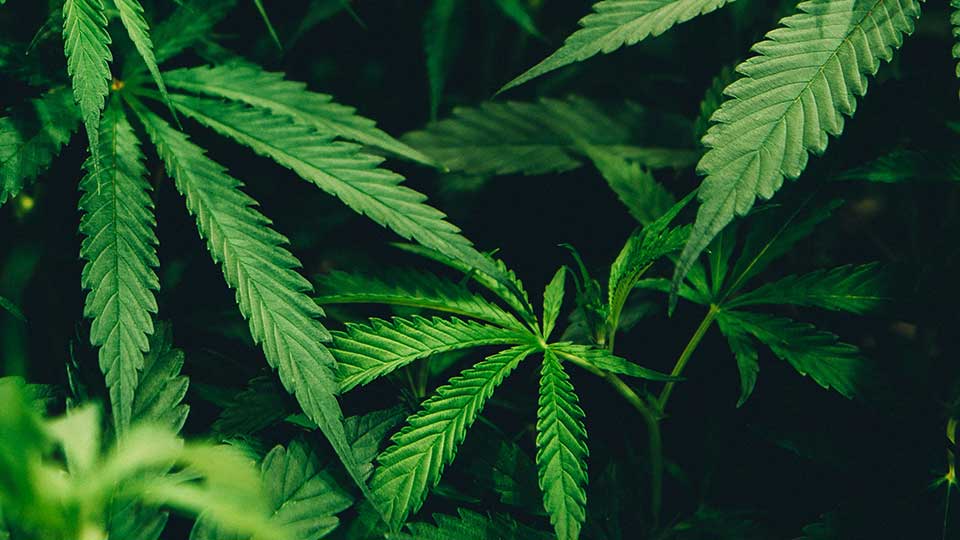By Jamie Truppi, MSN, CNS
Catch Jamie’s free talk on hemp & cannabinoids at Zenergy, Tuesday, November 5, 5:30-6:30 PM in the Yoga Studio.
Earlier this year, Idaho state legislators debated House Bill 122, introduced to legalize industrial hemp production and sales in our state. Passing the bill would have put Idaho on par with the vast majority of states that have legalized hemp, and the 2018 Farm Bill, which made hemp production and distribution legal under federal law. However, the Idaho law didn’t pass, much to the dismay of Idaho farmers and businesses selling – or wanting to sell – hemp-derived products, such as CBD oil.
As a nutritionist, I follow cannabis laws because I understand the natural and therapeutic benefits of hemp. While all varieties contain some combination of hundreds of plant compounds called “cannabinoids,” extremely low levels of THC (the psychoactive component) differentiates hemp from marijuana. Active botanical properties in cannabis support the body’s internal cannabinoid system. Discovered in the early 1990’s, this biological system plays a crucial role in establishing and maintaining human health.
The Cannabinoid-Health Connection
So recent is the discovery of the human endocannabinoid system that the general public (and perhaps many legislators) do not know how complexly it is interwoven with our immune system, nervous system and almost all of our body’s organs. According to a 2014 systematic review of scientific literature, its primary roles are to “relax, eat, sleep… and protect.”
We produce our own internally derived cannabinoids (“endocannabinoids”). These neurotransmitters circulate throughout the body to communicate with each other and activate cannabinoid receptors. Receptors reside everywhere scientists have looked: the brain, liver, spleen, muscles, connective tissues, fat tissues, glands, and immune and gastrointestinal cells.
Cannabinoid receptors (specifically, CB1) are particularly prevalent in the brain. Here, the endocannabinoid system regulates the brain’s ability to change and adapt; protects neurons from damage and degeneration; controls pain and memory; and connects brain activity with the operations of virtually every other physiologic system. Cannabinoids can influence our behavior and responses; memory, learning and decision making; emotions; innumerable bodily functions; and metabolism regulation.
One endocannabinoid, anandamide, is aptly named after the Sanskrit word ananda, meaning “divine joy,” because it acts on pleasure receptors in the brain. Anandamide influences both energy intake and storage by turning on hedonistic hormones that make you hungry for self-indulgent foods. The same “munchie” cravings occur when we consume exocannabinoids, such as THC.
Ever experienced runner’s high? Anandamide is released during exercise and stimulates mood and cognition, while “2-AG”, the other prevalent endocannabinoid, helps moderate the stress response.
Cannabinoid receptors in the brain even influence the creation of new fat cells, hence the potential role cannabinoids play in obesity and metabolic disorders. Interestingly, depression is connected both with obesity and chronic stress, so it may not be surprising that low levels of endocannabinoids are common in those suffering from major depression.
With the prohibition-era removal of cannabis from our food, agricultural and medical supply, humans have been deprived of cannabis for almost 80 years. What are the implications? More and more studies show that a depleted endocannabinoid system is connected to some of the most common diseases and disorders plaguing people today, from obesity and diabetes, to anxiety and depression.
For those of us with endocannbinoid deficiency (an actual medical term), it’s possible to improve mood disorders, stress, inflammatory conditions, and chronic pain by obtaining cannabinoids from plant foods such as cruciferous vegetables, although their activity on cannabinoid receptors is weak. Culinary herbs and spices containing beta-caryophyllene, a cannabinoid receptor stimulating terpene, include oregano, cinnamon and black pepper. And, my personal mood-enhancer, dark chocolate, contains anandamide.
CBD in Idaho
Currently, Idaho law states that products derived from allowable parts of the cannabis plant (including the stalks and seeds, but not leaves) and contain no trace of THC are “not illegal”. (See information from Idaho Office of Drug Policy.) Does that mean we can buy CBD in Idaho? Yes, assuming the products meet the detailed description outlined in the law. Most other states have signed onto the 2018 Farm Bill, which allows for up to 0.3% THC in products derived from hemp. Marijuana is still a class 1 drug.
Supplementation Conundrum
Due to the lack of regulation on hemp, a wide range of products are available, varying greatly in quality and bioavailability, making it confusing for consumers. What’s more, many CBD oils and whole-spectrum hemp products have been found to contain synthetic chemicals, heavy metals and other contaminants, and approximately three-quarters of products do not contain what the label indicates. Therefore, look for CBD and hemp products that are third-party tested. Suggested dosages, methods of application (sublingual, capsules, topical, etc.), bioavailability and potential interactions with medications should be considered.
Finally, because of the burgeoning field of research and explosion of products introduced daily worldwide, it’s challenging for health professionals to stay atop the market. In regards to your health and desired wellness outcomes, consult with a professional whom you trust before purchasing hemp products.
Jamie L. Truppi is a functional nutritionist who guides individuals and families toward optimal health through whole foods, plants and mindset. To learn more about Jamie or to schedule a consultation, visit her website.
